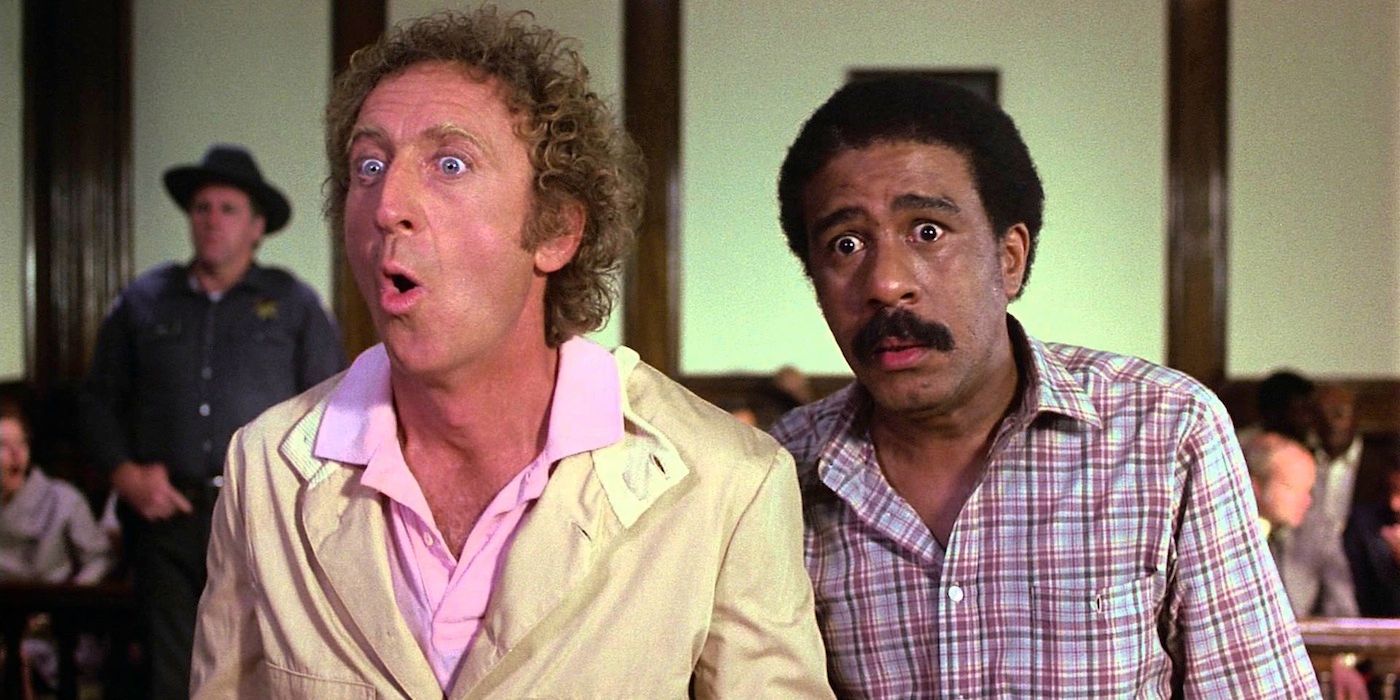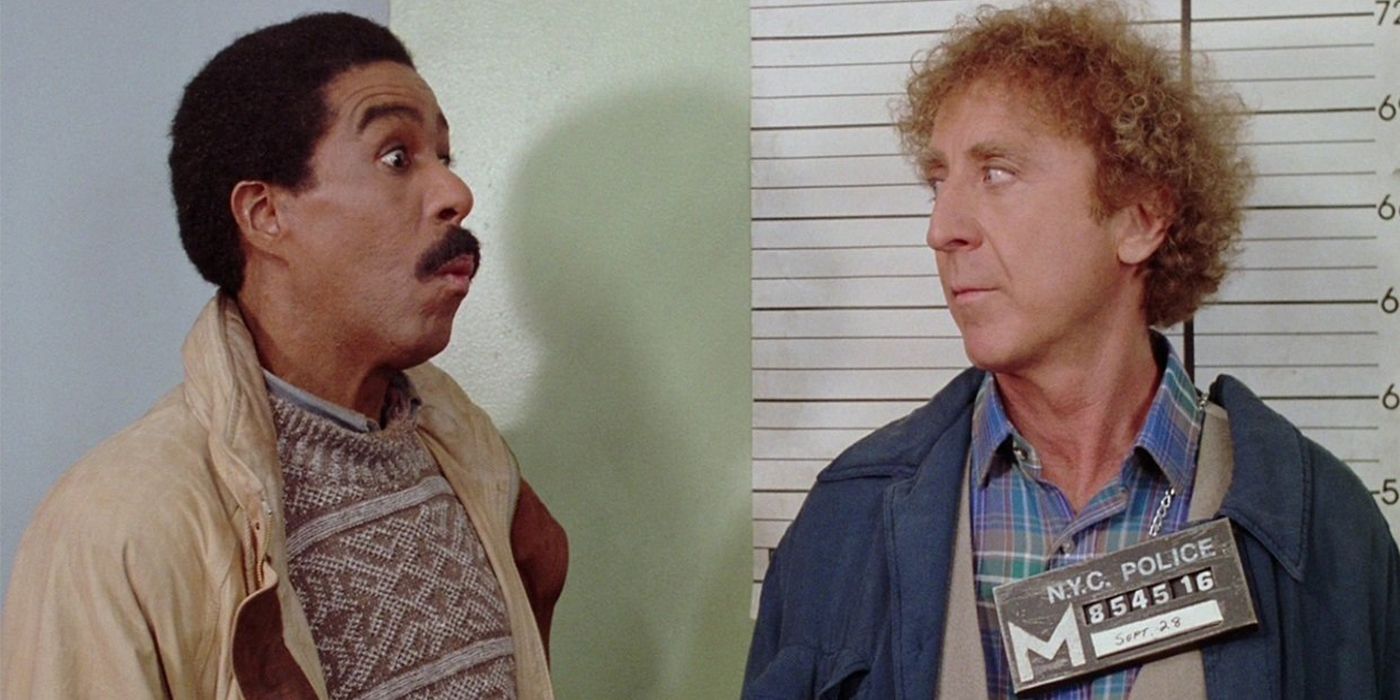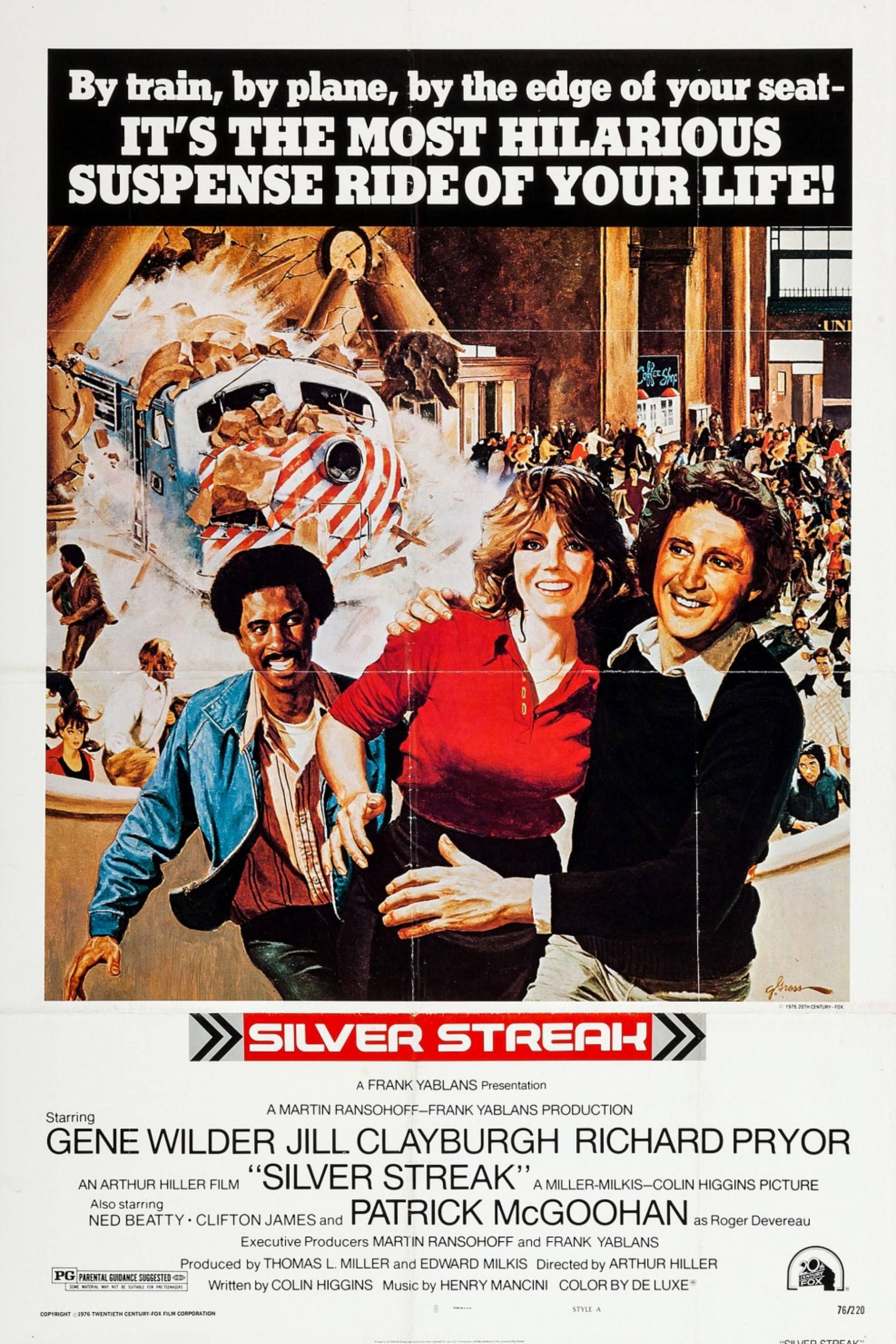Summary
- Wilder and Pryor’s comedic chemistry in films like Silver Streak and Stir Crazy was unmatched in American cinema history.
- Despite societal boundaries, Wilder and Pryor broke barriers as a rare black and white comedy duo in the film industry.
- The disappointing end of their partnership in Another You highlighted the struggles faced due to Richard Pryor’s deteriorating health.
The screen duo of Gene Wilder and Richard Pryor was one of the greatest pairings of comedians American cinema had ever seen, and together, the two made four feature films between 1976 and 1991. With an innate understanding of one another’s comedic sensibilities, whenever Wilder and Pryor shared a scene together, hilarity was almost a certainty, as they could expertly adlib and always get the best out of one another. While both performers had acclaimed careers as individuals, they accomplished some of their best work together.
Of course, Wilder was known for his incredible work with Mel Brooks on projects like The Producers, Young Frankenstein, and Blazing Saddles, which Pryor co-wrote years before the two shared the screen. Wilder also made cinematic history by portraying one of the most iconic movie characters, Willy Wonka from Willy Wonka and the Chocolate Factory. With all these achievements behind him, it was astounding that Wilder’s career managed to have an entirely new lease of life once he and Pryor got together to make four films over 15 years.
The career of Richard Pryor was also an incredible feat, as he utilized his skills as one of the greatest American stand-up comedians who ever lived and transferred them into a successful movie career. Outside his work with Wilder, Pryor excelled in movies like Paul Schrader’s crime drama Blue Collar and the musical fantasy The Wiz. However, it was clear once he started to work with Wilder that they had something special together, and as a rare pairing of black and white comedians, the two broke down social and political boundaries through their films.
Wilder and Pryor’s work together started on a high with the acclaimed mystery comedy Silver Streak, and although some of their later efforts were of varied quality, it was always amazing to see them together. Although one of the biggest things revealed in the Remembering Gene Wilder documentary highlighted that the duo were not close friends in real life, it was clear from simply watching them together that they had a special understanding of one another. The duo of Wilder and Pryor was a fantastic thing, and their beloved body of work together deserved major recognition.
4 Another You (1991)
Gene Wilder as George/Abe Fielding & Richard Pryor as Eddie Dash
The sad reality that must be faced was that although it was always enjoyable to see Gene Wilder and Richard Pryor share the screen, not even this comedy duo could save Another You from being a total disaster. This farcical story involved a con man named Eddie Dash, who was forced to assist a mental patient named George Fielding with adjusting to life outside his sanatorium. While this idea itself could make a great comedy, the script was not funny, and Another You just incoherently plodded along without meaning or purpose, becoming more unbearable as it continued.
Although Wilder gave a committed performance, and there were occasional glimpses of the duo’s old spark, one major issue was that Pryor was already showing symptoms of multiple sclerosis and could not properly get involved. To make matters worse, the original director, Peter Bogdanovich, was fired five weeks into the production and replaced by Maurice Phillips (via Ebony.) Overall, Another You floundered badly and would end up being Pryor’s final film appearance in a leading role, as well as the last of Wider and Pryor’s collaborations, as his illness continued to progress and he passed away in 2005.
Another You was a disappointing end to a trailblazing comedic partnership that had one of the biggest second-weekend drops of all time, dropping 78.1% from $1,537,965 to $334,836 (via Box Office Mojo.) The critics also tore Another You apart as they warned viewers to stay away from it, blasted the lackluster script by Ziggy Steinberg, and reminisced about the glory days of Wilder and Pryor. Film critic Roger Ebert said, “It’s almost like criticism is irrelevant; it’s a comedy; it’s not funny; it doesn’t work; it shouldn’t have been made” (via Siskel & Ebert.)
3 Stir Crazy (1980)
Gene Wilder as Skip Donahue & Richard Pryor as Harry Monroe
Stir Crazy was Gene Wilder and Richard Pryor’s second collaboration that proved their first acclaimed appearance together was not going to be a one-off event. The old magic was still there, and this was a film produced with the knowledge that Wilder and Pryor together were a match made in heaven, that they played off each other wonderfully, and that they had the skill needed to carry a major motion picture. With a story that involved two friends sentenced to 125 years in prison, Stir Crazy had good-natured energy carried forward by its two stars’ extreme chemistry.
While there was a lot to enjoy about Stir Crazy, it was not entirely without its issues and received a mixed reception from critics while it excelled at the box office, earning over $100 million against its $10 million budget (via Box Office Mojo.) Stir Crazy started strong as the duo was framed for a bank robbery, but at times felt overloaded as it tried to keep the laughs coming while it developed a convoluted plot about the prison’s annual rodeo competition. However, a strong supporting cast of oddball prisoners and Wilder and Pryor’s unique appeal saved the day.
Stir Crazy was far from a perfect movie, but it didn’t need to be when Wilder and Pryor were so infectiously funny throughout. This story was loaded with zany screwball antics, and one of the funniest aspects was how Wilder’s character kept his spirits up amid the worst circumstances imaginable and always tried to see the bright side while Pryor was entirely emotionally broken. Stir Crazy was a funny comedy of the type that doesn’t really get made anymore, and its success rested firmly on the shoulders of its two stars as they pulled it off entirely.
2 See No Evil, Hear No Evil (1989)
Gene Wilder as Dave Lyons & Richard Pryor as Wally Karew
With Richard Pryor playing a blind man and Gene Wilder as a deaf man, See No Evil, Hear No Evil was a buddy comedy of the best kind, as its two disparate characters complement each other perfectly. One had what the other lacked, and as this farcical crime story revealed itself, the true point of this film was to witness how a budding friendship can come together through the most unlikely means. With strong performances from Wilder, Pryor, and co-star Kevin Spacey, all three’s firm commitment to the bit helped See No Evil, Hear No Evil rise above its lackluster script.
See No Evil, Hear No Evil sets itself up with a classic comedy concept: Wilder’s Dave Lyons can only understand people if he can read their lips, and Pryor’s Wally Karew rarely lets people know he can’t see. Lyons hired Wally to work in his New York City concession shop, and before long, they found themselves embroiled in a convoluted crime conspiracy that involved a man shot dead, an elusive gold coin, and a wild goose chase across land and water while being pursued by police. All the while, Lyons can’t hear anything, and Wally can’t see.
The concept behind See No Evil, Hear No Evil could have fallen flat on its feet, but it mostly worked thanks to the immense talents of Wilder and Pryor. From how Lyons guided Wally’s fists as he found himself in street fights to Wally directing Lyons on where to look for his prison mugshot, See No Evil, Hear No Evil was full of frantic energy throughout. While not every joke was a home run, it had a lot of heart, and viewers connected with it as the film topped the box office for two weeks (via LA Times.)
1 Silver Streak (1976)
Gene Wilder as George Caldwell & Richard Pryor as Grover T. Muldoon
Gene Wilder and Richard Pryor’s greatest collaboration was also their first in Silver Streak from 1976, a film that leaned into aspects of comedy, farce, mystery, romance, and thriller. The fact that this was Wilder and Pryor’s most beloved and acclaimed work together was made all the more impressive as Pryor’s character did not show up until halfway through the story. In a way, Silver Streak almost felt like two different films rolled into one as the style changed so drastically once Wilder and Pryor finally shared the screen, and their incredible chemistry shone through each scene.
Silver Streak worked so well because it always kept the viewer guessing, and knowing what would happen next was impossible. Wilder played George Caldwell, a passenger abroad on the Silver Streak train to Chicago who soon found romance with a fellow passenger named Hilly (Jill Clayburgh.) Before long, a passenger was murdered, and Caldwell witnessed his body thrown from the train. What followed was a frantic mystery yarn that saw Caldwell become a suspect in the murder, get booted from the train, and eventually enlist the help of the car thief Grover T. Muldoon (Pryor.)
Once Wilder and Pryor got together, it was clear that a new comedic partnership for the ages had been born. While Silver Streak can often feel out of touch with modern sensibilities., such as in the scene where Wilder disguised himself as a black man to avoid the police. Although it was a movie that would never be made today, it’s impossible to deny Silver Streak’s place as one of the great comedies of the 1970s. When Silver Streak was released, audiences were not used to seeing black and white performers starring together in comedies, and Wilder and Pryor helped break down those cinematic boundaries.
Sources: Ebony, Box Office Mojo, Siskel & Ebert, Box Office Mojo (Stir Crazy), LA Times


